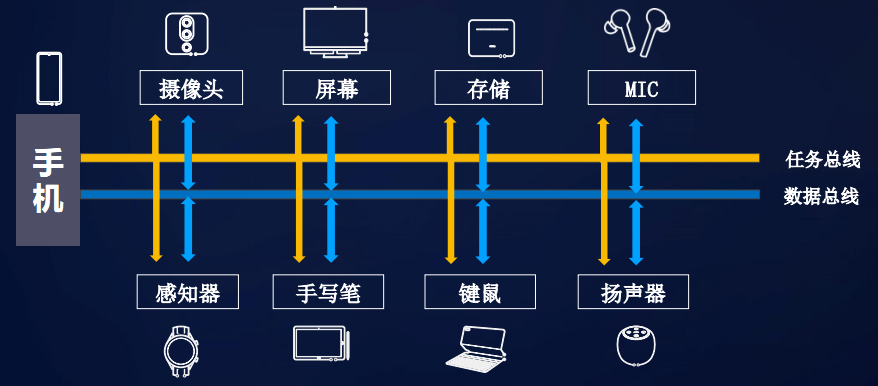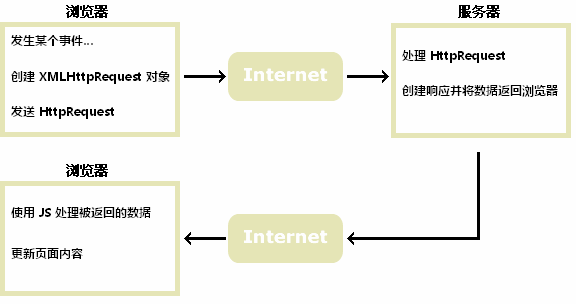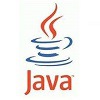数据结构与算法的实际应用——根据表关系构建SQL语句
背景需求
最近在项目中有一个场景,根据前端可视化模式传入的参数构建一组SQL语句,应用在Spark Streaming应用的数据同步中。这其实是一个已有的功能,但是发现原先的代码实现发现有较严重的问题,导致该功能在有关联查询时不可用,我经过调研之后决定重新实现。
这些SQL由普通的Lookup SQL和Spark SQL组成,Lookup SQL用于查询关联数据,SparkSQL则用于输出结果,核心问题在于如何合理组织这些表的关联关系。
PS:实现代码为Scala语言。
参数
其中前端传入的参数为
case class UpdateTask(
@BeanProperty id: Option[Long],
@BeanProperty taskName: Option[String],
@BeanProperty taskDesc: Option[String],
@BeanProperty sourceInstance: Option[String],
@BeanProperty targetInstance: Option[Long],
@BeanProperty eventInstance: Option[Long],
@BeanProperty sourceTree: Option[Seq[Long]],
@BeanProperty selectSourceTree: Option[Seq[Long]],
@BeanProperty targetTree: Option[Long],
@BeanProperty eventTable: Option[Long],
@BeanProperty tableRelation: Option[Seq[TableRelation]],
@BeanProperty filterCondition: Option[String],
@BeanProperty targetCalculateTableName: Option[String],
@BeanProperty targetCalculate: Option[Seq[TargetCalculate]],
@BeanProperty sourceTableField: Option[Seq[TableColumnInfo]],
@BeanProperty sqlType: Option[Int],
@BeanProperty classicSql: Option[String],
@BeanProperty sinkConfig: Option[String],
@BeanProperty targetPrimaryKey: Option[Seq[String]]
) extends SimpleBaseEntity
所需要用的参数为
-
eventTable: 触发表 -
tableRelation: 表关联关系列表,其中TableRelation的结构为case class TableRelation(@BeanProperty leftTableSelect: Long, @BeanProperty rightTableSelect: Long, @BeanProperty leftColumnSelect: String, @BeanProperty rightColumnSelect: String) -
targetCalculate: 输出结果的计算表达式,其中TargetCalculate的结构为case class TargetCalculate(@BeanProperty columnName: String, @BeanProperty config: String) -
selectSourceTree: 所用到的源表
解决方案
当没有关联关系的时候,比较简单,不在此讨论。当有多个关联关系时,应该先查询出被关联的表数据,再查询下一级的表,以此类推,实际场景下可能一般只有一两个表关联,但是毕竟还是需要考虑极端情况,原先的实现只考虑了简单的关联,复杂一点的关联则无法处理,经过一段时间思考后,决定基于树这种数据结构去实现此功能。
假设传入了如下一些表关系,并且A表为源表(触发表):
A <-> B
A <-> C
A <-> D
B <-> E
B <-> F
E <-> G
C <-> H
C <-> I
则经过处理后,可以生成如下一个树
--> E <--> G
--> B <--|
| --> F
|
A <----> D
|
| --> H
--> C <--|
--> I
在此需要说明,不需要考虑左右顺序问题,例如 A <-> B 等价于 B <-> A,在后面对此问题会有说明。
当传入了多个相同的表关联关系时,需要做一个聚合,因为前端的参数中,每一个关联关系只包含一组关联字段,所以当有多个关联字段时,就传入了多个相同的关联关系,但是关联字段不同。
得到这个树形关系后,也同时得到了表之间的依赖关系,但是还有一个前提, 每个表只能依赖一个表,假设如下关系:
--> E <--> G
--> B <--|
| --> F
|
A <----> D
|
| --> H
--> G <--|
--> I
此时,G表既可以由A得到,又可以由E得到,假设从A表得到G表,那么从G表又可以得到E表......产生了歧义,并由此产生一个了有环图。但是我们需求中目前没有这种关联关系(因为前端配置页面中,没有标识关联的方向性,即目前可视化模式传入的关联关系都是双向,对于一组关系,既可以从A得到B,也可以从B得到A,也就是前面的:A <-> B 等价于 B <-> A),所以不考虑这种情况,出现时给予报错,提示依赖关系产生了环。如果有方向性的话,我们生成树的算法会更简单一些,直接DFS即可,但是对于重复出现的表,需要做额外处理,例如给重复表起别名,保证结果集不会出现重名字段,否则Spark在处理过程中会产生异常。
在得到这个依赖关系后,后面的事情就好办了,我们从根节点开始层序遍历(也即为BFS广度优先遍历),逐层构建SQL语句,也可以采用树的先序遍历(DFS深度优先),只要保证子节点在父节点后面遍历即可,保证后面的SQL语句用到的关联参数在前面的SQL中已经查询到。
在生成SQL的过程中,为了避免不同库表有相同的表名或字段名,除了最后一句输出结果的Spark SQL,前面的SQL查询字段均需要起一个别名,在此沿用之前旧代码的方案:使用 {字段名} AS {库名}__{表名}__{字段名} 的形式保证字段名不会重复
代码实现
数据结构类定义
有了思路之后,便开始着手实现此功能,首先定义一个树节点的case类:
case class TableRelationTreeNode(value: Long, // 当前节点的表id
parentRelation: LinkRelation, // 和父节点的关联关系
childs: ListBuffer[TableRelationTreeNode] // 子节点
)
LinkRelation 描述了两个表之间的关联关系,是对前端传入的TableRelation聚合后的结果:
case class LinkRelation(leftTable: Long, // 左表id
rightTable: Long, // 右表id
linkFields: Seq[(String, String)] // 关联字段, 元组的两个参数分别为左表字段、右表字段
)
关联关系树的构建
/**
* @param parentNode 父节点
* @param remainRelations 剩余关联关系
*/
def buildRelationTree(parentNode: TableRelationTreeNode, remainRelations: ListBuffer[LinkRelation]): Any = {
if (remainRelations.isEmpty) return
val parentTableId = parentNode.value;
// 找出关联关系中包含父节点的表id
val childRelation = remainRelations.filter(e => e.leftTable == parentTableId || e.rightTable == parentTableId)
if (childRelation.isEmpty) return
// 将关联关系中父节点的关联信息置于左侧,方便后续操作
childRelation
.map(e => if (e.leftTable == parentTableId) e else LinkRelation(e.rightTable, e.leftTable, e.linkFields.map(e => (e._2, e._1))))
.foreach{e => parentNode.childs += TableRelationTreeNode(e.rightTable, e, new ListBuffer())}
// 移除已经使用过的关联关系
remainRelations --= childRelation
parentNode.childs foreach {buildRelationTree(_, remainRelations)}
}
SQL语句生成的核心代码
def buildTransSQL(task: UpdateTask): Seq[String] = {
// 存储所有用到的表(namespace为表的信息)
val namespacesRef = mutable.HashMap[Long, Namespace]()
task.selectSourceTree.get.foreach(i => namespacesRef += (kv = (i, Await.result(namespaceDal.findById(i), minTimeOut).get)))
val targetTableId = task.targetTree.get
// 目标表
val targetNamespace = Await.result(namespaceDal.findById(targetTableId), minTimeOut).head
namespacesRef.put(targetTableId, targetNamespace)
val eventTableId = task.eventTable.get
// 事件表(源/触发表)
val eventNamespace = namespacesRef(eventTableId)
// 没有计算逻辑,当做镜像同步,直接SELECT * ...
if (task.targetCalculate.isEmpty)
return Seq.newBuilder.+=(s"spark_sql= select * from ${eventNamespace.nsTable};").result()
val transSqlList = new ListBuffer[String]
// 先将触发表的所有字段查询出来
transSqlList += s"spark_sql= select ${
sourceDataDal.getSourceDataTableField(eventTableId).filter(_ != "ums_active_").map(e => {
s"$e AS ${eventNamespace.nsDatabase}__${eventNamespace.nsTable}__$e"
}).mkString(", ")
} from ${eventNamespace.nsTable}"
if (task.getTableRelation.nonEmpty) {
val remainLinks = new ListBuffer[LinkRelation]()
// 聚合重复的表关联关系
task.getTableRelation.getOrElse(Seq.empty)
.map(e => {
if (e.leftTableSelect > e.rightTableSelect) {
TableRelation(
leftTableSelect = e.rightTableSelect,
rightTableSelect = e.leftTableSelect,
leftColumnSelect = e.rightColumnSelect,
rightColumnSelect = e.leftColumnSelect
)
} else e
})
.groupBy(e => s"${e.leftTableSelect}-${e.rightTableSelect}")
.map(e => {
LinkRelation(
leftTable = e._2.head.leftTableSelect,
rightTable = e._2.head.rightTableSelect,
linkFields = e._2.map(e => (e.leftColumnSelect, e.rightColumnSelect))
)
}) foreach {
remainLinks += _
}
// 根结点
val rootTreeNode = TableRelationTreeNode(
eventTableId,
null,
new ListBuffer[TableRelationTreeNode]
)
// 构建关系树
buildRelationTree(rootTreeNode, remainLinks)
// 如果有剩余的关系未被使用,则说明有无法连接到根节点的关系,抛出异常
if (remainLinks.nonEmpty) {
throw new IllegalArgumentException(s"游离的关联关系:${
remainLinks.map(e => {
val leftNs = namespacesRef(e.leftTable)
val rightNs = namespacesRef(e.rightTable)
s"${leftNs.nsDatabase}.${leftNs.nsTable} <-> ${rightNs.nsDatabase}.${rightNs.nsTable}"
}).toString
}\n无法与根节点(${eventNamespace.nsDatabase}.${eventNamespace.nsTable})建立关系")
}
val queue = new mutable.Queue[TableRelationTreeNode]
queue.enqueue(rootTreeNode)
// 广度优先遍历,逐层构建SQL语句,保证依赖顺序
while (queue.nonEmpty) {
val len = queue.size
for (i <- 0 until len) {
val node = queue.dequeue
if (node.value != eventTableId) {
val relation = node.parentRelation
// 当前节点表
val curNs = namespacesRef(node.value)
// 父节点表
val parNs = namespacesRef(relation.leftTable)
val curTableName = s"${curNs.nsDatabase}.${curNs.nsTable}"
val fields = sourceDataDal.getSourceDataTableField(node.value)
val fieldAliasPrefix = s"${curNs.nsDatabase}__${curNs.nsTable}__"
// 构建lookup SQL
transSqlList += s"pushdown_sql left join with ${curNs.nsSys}.${curNs.nsInstance}.${curNs.nsDatabase}=select ${
fields.map(f => s"$f as $fieldAliasPrefix$f").mkString(", ")
} from $curTableName where (${
relation.linkFields.map(_._2.replaceAll(".*\\.", "")).mkString(",")
}) in (${relation.linkFields.map(_._1.replace(".","__")).map(e => "${" + e + "}").mkString(",")})";
}
node.childs foreach { queue.enqueue(_) }
}
}
}
// 输出最终结果集的SparkSQL
transSqlList += s"spark_sql= select ${
task.targetCalculate.get.map { e =>
s"${e.config.replaceAll("(\\w+)\\.(\\w+)\\.(\\w+)", "$1__$2__$3")} as ${e.columnName}"
}.mkString(", ")
} from ${eventNamespace.nsTable} where ${if (task.filterCondition.getOrElse("") == "") "1=1" else task.filterCondition.get}"
transSqlList.toSeq
}
测试
我新建了几张测试表,并使用小程序向库中随机生成了一些数据,然后又新建了一个目标表,以此来测试该功能,过程如下
前端配置
关联关系
计算逻辑
抽象出的关联关系应为:
------> customer_transaction
|
customer <---> customer_account_info <----
|
------> customer_seller_relation <-----> seller_info
后台生成的SQL:
spark_sql =
select
address AS adp_mock_spr_mirror__customer__address,
company AS adp_mock_spr_mirror__customer__company,
gender AS adp_mock_spr_mirror__customer__gender,
id AS adp_mock_spr_mirror__customer__id,
id_card AS adp_mock_spr_mirror__customer__id_card,
mobile AS adp_mock_spr_mirror__customer__mobile,
real_name AS adp_mock_spr_mirror__customer__real_name,
ums_id_ AS adp_mock_spr_mirror__customer__ums_id_,
ums_op_ AS adp_mock_spr_mirror__customer__ums_op_,
ums_ts_ AS adp_mock_spr_mirror__customer__ums_ts_
from
customer;
pushdown_sql
left join with tidb.spr_ods_department.adp_mock_spr_mirror =
select
account_bank as adp_mock_spr_mirror__customer_account_info__account_bank,
account_level as adp_mock_spr_mirror__customer_account_info__account_level,
account_no as adp_mock_spr_mirror__customer_account_info__account_no,
customer_id as adp_mock_spr_mirror__customer_account_info__customer_id,
entry_time as adp_mock_spr_mirror__customer_account_info__entry_time,
id as adp_mock_spr_mirror__customer_account_info__id,
loc_seller as adp_mock_spr_mirror__customer_account_info__loc_seller,
risk_level as adp_mock_spr_mirror__customer_account_info__risk_level,
risk_test_date as adp_mock_spr_mirror__customer_account_info__risk_test_date,
ums_active_ as adp_mock_spr_mirror__customer_account_info__ums_active_,
ums_id_ as adp_mock_spr_mirror__customer_account_info__ums_id_,
ums_op_ as adp_mock_spr_mirror__customer_account_info__ums_op_,
ums_ts_ as adp_mock_spr_mirror__customer_account_info__ums_ts_
from
adp_mock_spr_mirror.customer_account_info
where
(id) in ($ { adp_mock_spr_mirror__customer__id });
pushdown_sql
left join with tidb.spr_ods_department.adp_mock_spr_mirror =
select
customer_id as adp_mock_spr_mirror__customer_seller_relation__customer_id,
id as adp_mock_spr_mirror__customer_seller_relation__id,
relation_type as adp_mock_spr_mirror__customer_seller_relation__relation_type,
seller_id as adp_mock_spr_mirror__customer_seller_relation__seller_id,
ums_active_ as adp_mock_spr_mirror__customer_seller_relation__ums_active_,
ums_id_ as adp_mock_spr_mirror__customer_seller_relation__ums_id_,
ums_op_ as adp_mock_spr_mirror__customer_seller_relation__ums_op_,
ums_ts_ as adp_mock_spr_mirror__customer_seller_relation__ums_ts_,
wechat_relation as adp_mock_spr_mirror__customer_seller_relation__wechat_relation
from
adp_mock_spr_mirror.customer_seller_relation
where
(customer_id) in (
$ { adp_mock_spr_mirror__customer_account_info__id }
);
pushdown_sql
left join with tidb.spr_ods_department.adp_mock_spr_mirror =
select
balance as adp_mock_spr_mirror__customer_transaction__balance,
borrow_loan as adp_mock_spr_mirror__customer_transaction__borrow_loan,
comment as adp_mock_spr_mirror__customer_transaction__comment,
customer_account_id as adp_mock_spr_mirror__customer_transaction__customer_account_id,
customer_id as adp_mock_spr_mirror__customer_transaction__customer_id,
deal_abstract_code as adp_mock_spr_mirror__customer_transaction__deal_abstract_code,
deal_account_type_code as adp_mock_spr_mirror__customer_transaction__deal_account_type_code,
deal_code as adp_mock_spr_mirror__customer_transaction__deal_code,
deal_partner_account as adp_mock_spr_mirror__customer_transaction__deal_partner_account,
deal_partner_name as adp_mock_spr_mirror__customer_transaction__deal_partner_name,
deal_partner_ogr_name as adp_mock_spr_mirror__customer_transaction__deal_partner_ogr_name,
deal_partner_org_num as adp_mock_spr_mirror__customer_transaction__deal_partner_org_num,
id as adp_mock_spr_mirror__customer_transaction__id,
subject as adp_mock_spr_mirror__customer_transaction__subject,
transaction_amount as adp_mock_spr_mirror__customer_transaction__transaction_amount,
transaction_time as adp_mock_spr_mirror__customer_transaction__transaction_time,
ums_active_ as adp_mock_spr_mirror__customer_transaction__ums_active_,
ums_id_ as adp_mock_spr_mirror__customer_transaction__ums_id_,
ums_op_ as adp_mock_spr_mirror__customer_transaction__ums_op_,
ums_ts_ as adp_mock_spr_mirror__customer_transaction__ums_ts_
from
adp_mock_spr_mirror.customer_transaction
where
(customer_id, customer_account_id) in (
$ { adp_mock_spr_mirror__customer_account_info__id },
$ { adp_mock_spr_mirror__customer_account_info__account_no }
);
pushdown_sql
left join with tidb.spr_ods_department.adp_mock_spr_mirror =
select
current_bank as adp_mock_spr_mirror__seller_info__current_bank,
department_id as adp_mock_spr_mirror__seller_info__department_id,
email as adp_mock_spr_mirror__seller_info__email,
entry_time as adp_mock_spr_mirror__seller_info__entry_time,
id as adp_mock_spr_mirror__seller_info__id,
id_card as adp_mock_spr_mirror__seller_info__id_card,
leader_id as adp_mock_spr_mirror__seller_info__leader_id,
mobile as adp_mock_spr_mirror__seller_info__mobile,
name as adp_mock_spr_mirror__seller_info__name,
position as adp_mock_spr_mirror__seller_info__position,
tenant_id as adp_mock_spr_mirror__seller_info__tenant_id,
ums_active_ as adp_mock_spr_mirror__seller_info__ums_active_,
ums_id_ as adp_mock_spr_mirror__seller_info__ums_id_,
ums_op_ as adp_mock_spr_mirror__seller_info__ums_op_,
ums_ts_ as adp_mock_spr_mirror__seller_info__ums_ts_
from
adp_mock_spr_mirror.seller_info
where
(id) in (
$ { adp_mock_spr_mirror__customer_seller_relation__seller_id }
);
spark_sql =
select
adp_mock_spr_mirror__customer_account_info__id as id,
adp_mock_spr_mirror__customer__real_name as name,
IF(adp_mock_spr_mirror__customer__gender = 0, "0", "1") as sex,
adp_mock_spr_mirror__seller_info__department_id as age,
adp_mock_spr_mirror__customer__mobile as phone,
adp_mock_spr_mirror__seller_info__entry_time as born,
adp_mock_spr_mirror__customer__address as address,
IF(
adp_mock_spr_mirror__customer_transaction__borrow_loan = 1,
"1",
"0"
) as married,
NOW() as create_time,
NOW() as update_time,
'P' as zodiac
from
customer
where
1 = 1;
同步结果
从Spark后台日志中可以看到,数据已经正常插入目标表。
结语
以上是树和BFS在实际开发场景中的一个应用,代码实现其实较为简单,重点是实现的思路,当然解决问题的方法并不是唯一的,在此问题中,也可以在构建树的过程中直接构建SQL语句,省去后续的BFS过程,但是我考虑到后续可能增加的需求,还是将此处拆成了两步,方便后续在扩展,根据实际场景选择方案即可。另外,计算逻辑中缺少字段强校验,当用户输入错误字段时在运行期间才能察觉到,考虑后期再增加此功能。
有不对的地方欢迎指正,希望本文对大家有所帮助。









